- Home
- Thomas Keneally
American Scoundrel American Scoundrel American Scoundrel Page 7
American Scoundrel American Scoundrel American Scoundrel Read online
Page 7
As in the old days, before London, Teresa received numerous visits from her friends. Molly Coggins, the Sanford girls, Ann Hendrickson, all visited her in that spring of Dan’s state senatorship. And as Teresa had said to Florence, Dan liked to rent substantial houses. Those who disapproved of him assumed he achieved this with the sweeteners he received while serving in office. Dan spoke out against the Albany bridge bill on behalf of interests that would be damaged by it, and also against the Trinity Church bill, brought forward at the behest of less well-off Episcopal churches with which Trinity shared none of its extensive real estate revenues. It was claimed in one newspaper that the interests behind Trinity paid Dan $10,000 to block the bill. But, as open as he may have been to such a fee, his continuing need to borrow makes that an unlikely sum, and the people who made the accusations often distorted other details of his behavior and may have done so again. Not that it would have been contrary to the political traditions of Tammany for a politician to accept cash to espouse a cause of whose rightness he was more or less convinced. As George Washington Plunkett of Tammany Hall later said, this sort of practice was “honest graft,” and was to be distinguished from the other kind of graft non-Tammany people, such as Republicans, were involved in.
Sweetened or not, Dan was active on the floor, marshaling opposition to the bill that would have dispersed Trinity’s income and canceled its privileges. When it came to his turn to speak, he was all eloquent and nostalgic piety: “I was born and reared within the bosom of this church and in this parish. The graves of my humble ancestors lie within its sacred enclosures. The marriage vow, the baptismal blessing, were pronounced upon those from whom I sprang, by the side of its altars. It is the only church which now remains within my district to take care of the poor.”25
Dan now found another chance to bring forward an act to establish a plan for the central park while providing the city with the appropriation to begin its improvement. The first $1,500,000 was thus authorized, though even this inadequate sum raised the ire of taxpayers and property owners, who swarmed into the lobby of the capitol at Albany in opposition. Surprisingly, the newspaper that most approved of Dan’s efforts was the Herald. Mr. Bennett lived near where Dan and Teresa now did, on the outskirts of New York, “in the suburbs,” as Dan said, “and allowed me the hospitality of his column for an occasional advocacy of the park. This was our only support in the press.”
Dan had gained considerable backing from the rural members of the two houses by such occasional courtesies as drafting bills for them and assisting them in matters of parliamentary procedure, yet he found that opposition to the park “was slowly and surely decimating my forces.” Men would come to him and say, “Mr. Sickles, we were disposed, as you know, to favor this hobby of yours, but we are told that no city in the world has ever gone to the expense of establishing such a park as you propose in New York.” They had been told that all the great parks in other countries had been paid for by the national governments. Hyde Park, Regent’s Park, and Richmond Park in England were owned by the Crown. The Bois de Boulogne was maintained by the French imperial treasury. Dan was asking, they complained, “that the city alone should undertake this job.”
So the legislators in Albany believed that their voters and their colleagues would put increasing pressure on them to vote against the bill. His opponents went home, wrote Sickles, loudly expectant of his defeat. But Dan sent for a friend, Charles K. Graham, a young engineer of great promise, and offered him $500 to make two panoramic pictures on a large scale. One was to represent the present topography of the territory within the proposed central park, the rocks and swamps. The other was to be of a Garden of Eden. “One must see in it beautiful lawns of emerald green,” said Dan, “soft as velvet, and groves of tall, graceful trees; rambling brooks with musical voices, expanding into lakes that mirror the swans floating on their surfaces; gondoliers filled with happy groups of maidens and cavaliers; bridges of graceful design; broad avenues filled with gay equipages and thousands of happy men, women and children filling the landscape . . . and this we will call The Park, Charlie, when you have finished this Garden of Eden.”
In the end, Graham undertook the work as a labor of love, and Dan had the two panoramas placed on the wall of the anteroom of the senate chamber in Albany. He brought members of both houses in small groups to inspect them—on one wall, the forbidding ground that presently existed; on the other, the paradise he promised to create. Some of the critics of the project particularly ridiculed the flowers in the second picture. “Every bud would require police protection, night and day. Bah!”
Dan also brought together three members of the senate and three members of the assembly, all of whom opposed the project, and set aside $300 of his own money to allow this panel of six to visit the city, go over the ground of the proposed Central Park, and report to their associates whether or not the first picture faithfully portrayed the existing topography. Their report, made within the next ten days, was favorable, and as a result of this conversion of the formerly hostile legislators, the tide of opinion turned. A member of the senate told Dan, “You might as well go home. The park bill will pass.”
This tale, admittedly related chiefly from Dan’s point of view, is nonetheless an indication of his creative powers as a parliamentary manipulator, and an explanation of the devotion many people in the Democratic Party felt for him. It helps explain why Dan had been elected chairman of the executive committee of Tammany Hall, the dominant organizational post in the Democratic Party of New York. His consultative committee of twenty-four Democrats stood by him. He was able to marshal those twenty-four behind him through the entire park process, and thus was able to write, “In the fifties . . . I saw the rocks in Central Park covered with soil . . . filled with earth; great basins for lakes excavated . . . countless trees planted . . . long bridle paths made; bridges of many graceful forms erected . . . and nowadays, as I drive through these charming pleasure grounds and see thousands enjoying them, I sometimes feel a complacent pride in the recollection that I helped to create this park.”26
While in Albany, Dan was equally, democratically, and splendidly eloquent in the matter of a bill to prevent illegal voting in the City of New York—the registry bill. He needed no prompting to attack this legislation and protect Tammany’s strong hold on New York City elections, and he was appalled that the “whole framework of this bill presupposes that election frauds in New York consist in illegal voting by electors.” It was electoral inspectors who were corrupt, he claimed, yet the bill sought to give electoral inspectors in New York even greater power! He argued that every voter of what he called the American Party, that is, the Know Nothings, would be duly registered without any inconvenience to himself, while other political parties “would be obliged to depend wholly on the willingness of individuals to attend at the office of the inspectors and undergo the species of examination or trial which the inspectors are authorized by this Bill to institute.” A stranger sitting in the senate chamber in Albany and listening to the debates would have supposed that illegal voting was limited to New York, that Buffalo, Utica, Rochester, Albany contained no persons wicked enough to violate the electoral law! They would be amazed, Dan said, that the City of Brooklyn, the second city in the state, “has no occasion for the purifying provisions of this Bill!”
He was pleased to defend the Irish who had helped elect him. He attacked an opposing senator who had spoken of violations of the election laws by the O’Callaghans and the Murphys, names used glibly to represent the Irish clans of Tammany, whereas in ninety-nine cases out of a hundred, said Dan, the Irishman considered election-rigging “a treason to his land of adoption.”
This claim must have provoked guffaws among some of the opponents, but the speech was not designed for them. It was designed to be read, cherished, and applauded by the legions of New York Democrats, perhaps specifically by the “O’Callaghans and the Murphys.”27
Dan now lived in “the suburbs,” in a worthy residenc
e uptown, since a larger house in Lower Manhattan was beyond his means. The country house he bought—or, as some said, his father bought for him but kept title to—was a big, foursquare structure that had been built in the first decade of the century on what would later be Ninety-first Street. Though Dan’s city had grown in population nearly sevenfold since his birth thirty-seven years before, it had not yet devoured this remote area of Manhattan, known as Bloomingdale. Though a suburb, it had the look of a picturesque village and took its name from the Knickerbockers, an old Dutch East India Company family. Bloomingdale was also the original name of the street later known as Broadway, which connected the township to the city. A regularly scheduled coach could transport the Sickles family down seven miles of increasingly serviceable road to New York proper and its delights, to the corporation attorney’s office in City Hall, and to Dan Sickles’s law office on Nassau Street. Their house stood on the Hudson—part of its grounds are now Riverside Park. The road into it, a country lane from the direction of Broadway, came down a rocky but verdant escarpment. The area was well wooded, the terrain graced by oak trees, and, a few streets to the north, a picturesque rivulet ran through a ravine into the Hudson at Striker’s Bay. Dan’s young, admired wife, nineteen-year-old Teresa, and her lovely child, Laura, were adornments to its arcadian air.28
The acquisition of the Bloomingdale house, Teresa had hoped, indicated that Dan needed a retreat, a nest; that he harbored a wish to take his wife and daughter rowing on the Hudson on still days in summer. She hoped to put behind her all the gossip in the formerly vicious Herald over Dan’s association with the dreadful Fanny White. Teresa loved the large, pleasant, but drafty and demanding house, and for the sake of Dan’s success, and as a token of her love, became its true and effective administrator. She supervised the moving in and placement of the furniture—the ornate and solid chairs of the Rococo Revival, the ottoman sofas, the Belgian tapestry mats and oriental rugs, the iron and brass beds, including the marriage bed she shared with Dan, which, appropriate for a couple of their standing at that time, was a high, assertive, curtained Renaissance Revival structure. She attended to the complex business of curtaining and valancing the windows.
Similarly, she managed the house’s servants, the maid-cook, the gardener, the groom (she had a passion for horses), and she oversaw the domestic animals, hens, dogs, some cows that roamed the verdant reaches of this property by the river, and horses. She would always cherish this house, even after it became her prison.29
In her early occupation of Bloomingdale, Teresa told her old school friends, she amused and occupied herself by walking and riding about the rustic location “chased by five dogs and two cats.” She had been lent a horse for the time being, till she settled to acquiring one of her own, by a local man, one of the Strykers who gave their name, Anglicized, to a nearby bay of the Hudson and who had lived in the area from before the Revolution. But since Dan was always absent on politics, she confessed, “I found it rather stupid riding on horseback every day alone,” and she sent it back to Mr. Stryker, with her thanks.
She went to town occasionally, once to sit for a photograph by the renowned Mathew Brady, whose name would soon become irrevocably attached to photographs of the Civil War. “I dread having to stand for the photograph Brady is taking—still more do I dread the dressing,” she confessed. But Brady had taken a portrait of Dan’s mother, so Teresa was filially bound to submit. She thought the miniature, now sadly lost, acceptable, but worried that the larger one was too coarse-looking. It was an era in which a certain fleshiness was considered essential to womanly beauty. Childbirth and fevers were great killers of women, and were considered more likely, in an age without antibiotics, to kill the slim, the anorexic, the narrow-hipped. But although it was taken for granted that all beauties were of ample, curved body, as was the young Teresa, that quality had to be combined with a certain maidenly delicacy of feature. Flesh and spirit must effectively combine in true measure, in a way that spoke as authentically of heaven as of desire. A sketch that was based on the Brady photograph, and published in an illustrated paper of the day, shows that Teresa had an exquisite face, heart-shaped, full-lipped, with enormous and arresting dark eyes.
She was delighted that Dan, despite the demands of politics this hectic year, was occasionally with her; on an evening that fall she had been to Wallack’s Theatre with him and two of their friends. She loved the theater, as did Dan. She had been perfectly delighted with the pieces, especially the first play, “Don Caesar de Balzar which old Wallack played.” On another evening, Manny Hart, Gus Schell, Teresa’s mother, Dan, and a friend from Bloomingdale and Tammany, Tom Field, all went to a fair at the Crystal Palace to raise funds for a hospital. Teresa met a number of schoolmates from the convent, and chatted away enjoyably to them, a girl who, in company, “enjoyed myself to my heart’s content. If Dan would only come home tonight, I would like to go to Laura Keene’s—they say it is a beautiful house, and besides, they are playing a comedy at it now that was written by ‘Mr. Wilkins,’ one of the editors of the Herald—as I know the man, I would like to see if his play is as stupid and disagreeable as the author.” We do not know whether Dan got home that evening to take Teresa to Laura Keene’s, but clearly she refused to forgive the Herald long after Dan found it half expedient to do so.30
It is interesting to note how much, apart from Dan’s absences, Teresa found pleasure in the semirustic life. After all, she had entertained notables at the heart of the British Empire, and here she was among the oak trees on the Hudson. But she was an adaptable young woman, and would soon adapt yet again to a more public existence. She did not convey in her letters, and certainly did not brag about, how hectic a year it had proved to be. When James Buchanan returned from England, in April 1856, his friend and aide Dan had a resonating welcome ready for him in New York, where he intended to present his old friend with the combined resources of Tammany. Buchanan’s ship having docked, he was met by a splendid carriage and driven up Fifth Avenue to the Everett House on Union Square. There, waiting for him, was one Senator John Slidell of Louisiana, an enormously powerful Democratic kingmaker from Louisiana and a great advocate of acquiring Cuba. Senator Slidell had raised a considerable amount of money for Buchanan’s campaign from his contacts in Wall Street, to whom Slidell held out the prospect of the ruin of American commerce if the Republican candidate, John Charles Frémont, was elected.31
But Dan himself was persuaded by Tammany to run for the United States Congress in those elections of 1856. If he won, together with Old Buck, they would be a team reunited in Washington. Old Buck went into the Democratic convention in Cincinnati with a powerful number of Democrats in his camp. Given the temper of the times, he had an important advantage over Stephen Douglas, the hugely talented, diminutive powerhouse from Illinois, and over President Pierce and Secretary of State Marcy. He carried no blame for the bloody territory of Kansas a thousand miles to the west, a region for control of which pro- and anti-slavery forces were competing. The national imagination was unsettled and fevered by Kansas. The previous year a posse of eight hundred proslavery men had poured into Lawrence, Kansas, the antislavery Free-Soilers’ chief town, demolishing newspaper offices, burning public buildings, including the home of its antislavery governor, shooting males, and looting shops. In response, in the spring of 1856, the abolitionist zealot John Brown had kidnapped five proslavery settlers from their homesteads near Pottawatomie Creek, Kansas, and, in God’s name, hacked them to death with broadswords. The nation believed that the conflict in Kansas was a form of civil war, begun at the peril of American society, its culture, its commerce, and its remarkable Constitution. People yearned for an unspectacular but wise figure who bore no responsibility for bleeding Kansas, someone who seemed safer than sparkling Douglas and less fallible than the charming incumbent, Franklin Pierce.
In the North, Buchanan was up against Frémont, but in the South, he was opposed by the Know-Nothing anti-immigrant, and anti-Catholic candidate Mi
llard Fillmore, a former President. Here too he was helped by events, for Fillmore’s warnings about the threat to American culture from the Irish did not measure up in most Americans’ minds to the central issue: the question of preservation or abolition of slavery, and the capacity of either to break the nation asunder. Though young Republicans marched in vast torchlit processions, chanting, “Free Soil, Free Speech, Free Men, Frémont,” many former Whig voters, the party from which the Republicans had grown, chose Buchanan for the sake of the peace his gravity of manner seemed to offer. Frémont’s own father-in-law decided that Buchanan was the safer bet.
On the day, Buchanan carried Pennsylvania, New Jersey, Indiana, Illinois, and California, and nearly the entire South. He was a minority President, achieving only 45 percent of the vote. It was undeniable, though, that the majority of Americans felt relief at patriarchal Buchanan’s success, a return to a platform on which the national debate might proceed to a peaceful rather than a rancorous, radical conclusion.32
Dan Sickles was not only the political prodigy who brought the New York vote to the Democratic presidential candidate James Buchanan. The same day, he himself was elected as representative for the Third Congressional District of New York, as easily as, the previous year, he had been elected to the state senate. The Third District covered much of the older section of Manhattan south of Houston Street and was bounded on the east by Broadway. It embraced the city’s financial center and a long stretch of wharves with a population of just under 100,000, almost half of whom were foreign-born, either German or Irish, though predominantly Irish; it was an area in which hard-line Tammany Democrats could not lose. Dan Sickles was one of fifty-three Northern Democrats elected to the House, where he joined seventy-five Southern Democrats and ninety-two Republicans.33

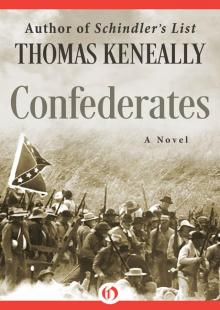 Confederates
Confederates Flying Hero Class
Flying Hero Class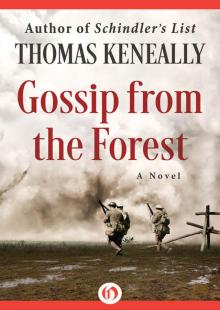 Gossip From the Forest
Gossip From the Forest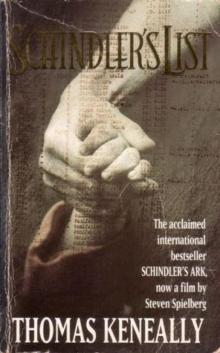 Schindler's List
Schindler's List Bring Larks and Heroes
Bring Larks and Heroes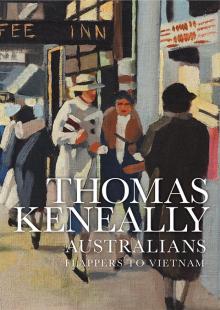 Australians: Flappers to Vietnam
Australians: Flappers to Vietnam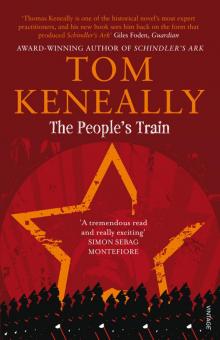 The People's Train
The People's Train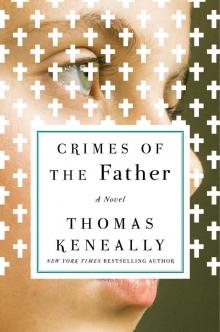 Crimes of the Father
Crimes of the Father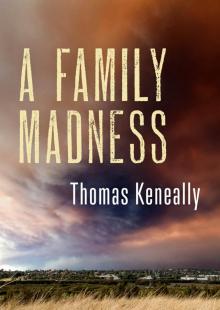 A Family Madness
A Family Madness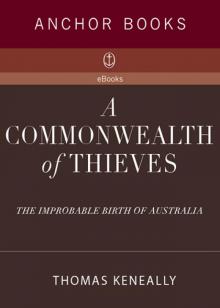 A Commonwealth of Thieves
A Commonwealth of Thieves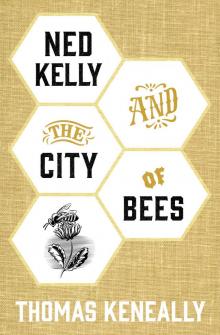 Ned Kelly and the City of Bees
Ned Kelly and the City of Bees A River Town
A River Town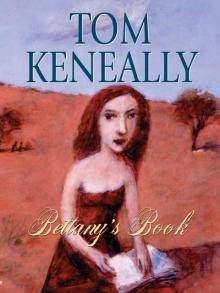 Bettany's Book
Bettany's Book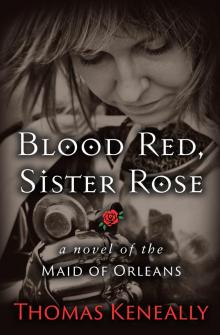 Blood Red, Sister Rose: A Novel of the Maid of Orleans
Blood Red, Sister Rose: A Novel of the Maid of Orleans Victim of the Aurora
Victim of the Aurora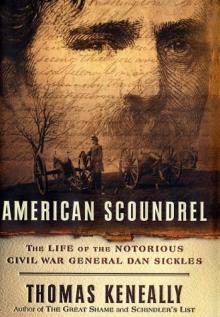 American Scoundrel American Scoundrel American Scoundrel
American Scoundrel American Scoundrel American Scoundrel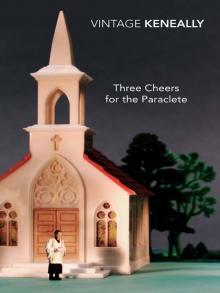 Three Cheers for the Paraclete
Three Cheers for the Paraclete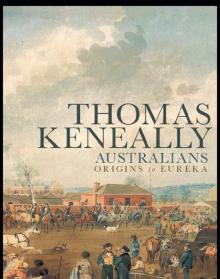 Australians: Origins to Eureka: 1
Australians: Origins to Eureka: 1 The Power Game
The Power Game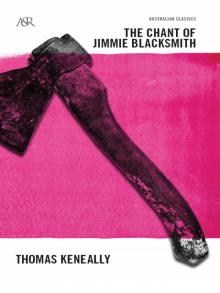 The Chant Of Jimmie Blacksmith
The Chant Of Jimmie Blacksmith The Daughters of Mars
The Daughters of Mars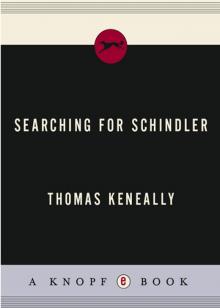 Searching for Schindler
Searching for Schindler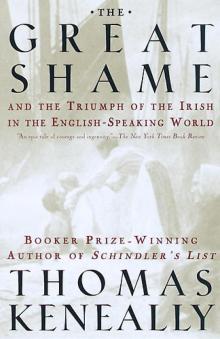 The Great Shame: And the Triumph of the Irish in the English-Speaking World
The Great Shame: And the Triumph of the Irish in the English-Speaking World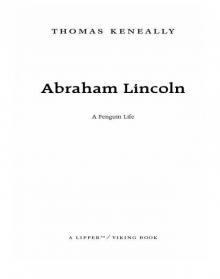 Abraham Lincoln
Abraham Lincoln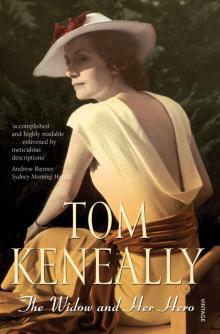 The Widow and Her Hero
The Widow and Her Hero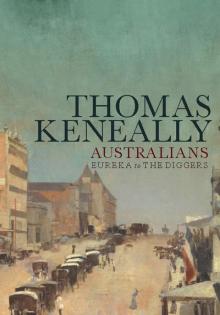 Eureka to the Diggers
Eureka to the Diggers Shame and the Captives
Shame and the Captives The Survivor
The Survivor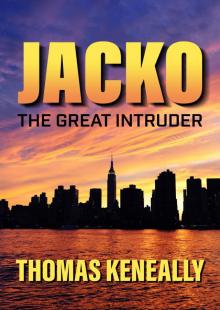 Jacko: The Great Intruder
Jacko: The Great Intruder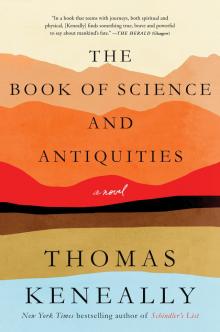 The Book of Science and Antiquities
The Book of Science and Antiquities Homebush Boy
Homebush Boy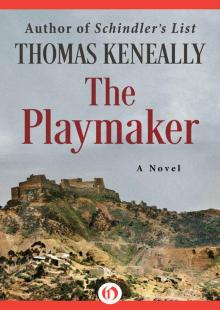 The Playmaker
The Playmaker To Asmara: A Novel of Africa
To Asmara: A Novel of Africa A Woman of the Inner Sea
A Woman of the Inner Sea The Tyrant's Novel
The Tyrant's Novel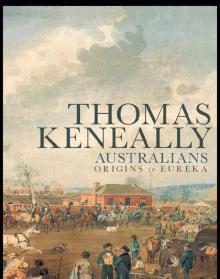 Australians
Australians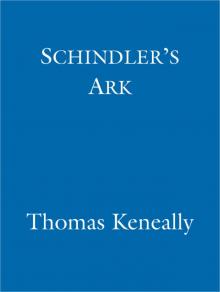 Schindler's Ark
Schindler's Ark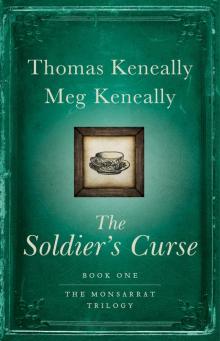 The Soldier's Curse
The Soldier's Curse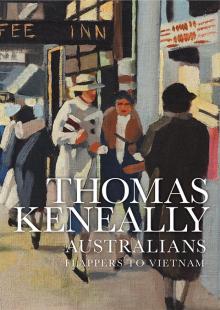 Australians, Volume 3
Australians, Volume 3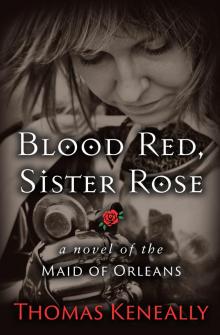 Blood Red, Sister Rose
Blood Red, Sister Rose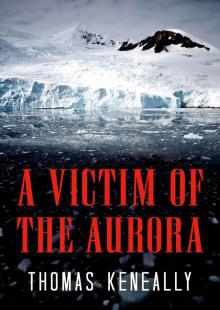 A Victim of the Aurora
A Victim of the Aurora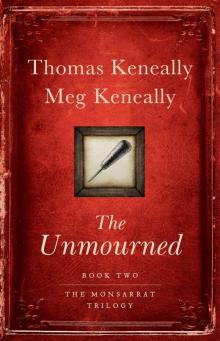 The Unmourned
The Unmourned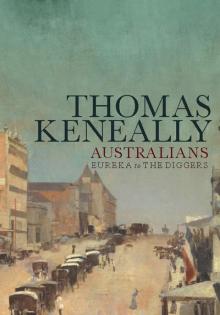 Australians, Volume 2
Australians, Volume 2 To Asmara
To Asmara